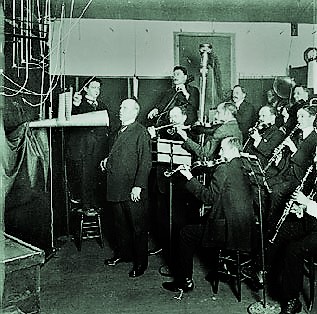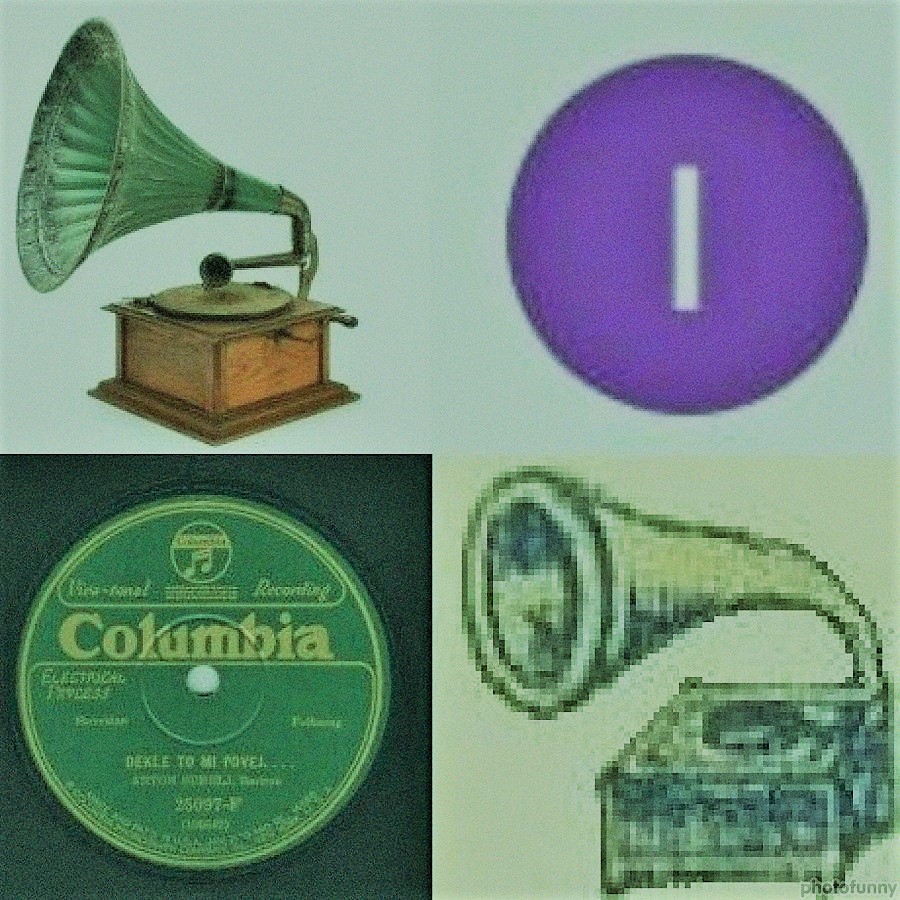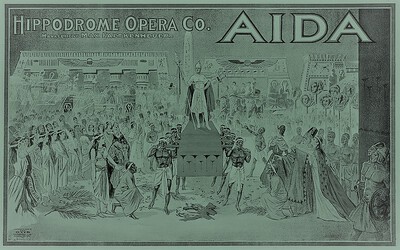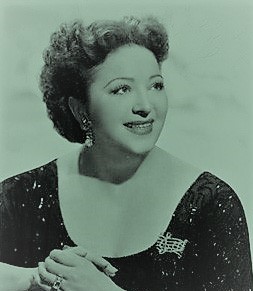
In the footsteps of Slovenian operatic voices . . .
. . . at the beginning of the 20th century
This page is dedicated to the now mostly forgotten Slovenian singers born at the end of the 19th century who have been successful performers home and abroad and have left us recordings of their wonderful voices and their art. They testify to the rich Slovenian singing and song culture and the quality of music education institutions, primarily the Glasbena Matica Ljubljana. Here you can find some of their recordings, images and learn something about them.
Another theme of the page is acoustic and early electric recordings of Slovenian folk and art songs performed by Slovenian, Croatian, Serbian opera and folk singers. Among them are several lesser-known or now forgotten folk songs. The recordings are an important part of the Slovenian cultural heritage.
The objective of this page is to arouse interest in these songs, give a platform to them as historical documents of the art of singing and keep the memory of these wonderful artists alive.
Due to poor sound quality, scratches and singing voices that are somewhat different from what we are used to hearing nowadays, the recordings will likely sound strange to you initially. The oldest music recordings were recorded on wax cylinders, which were soon replaced by records at 78 revolutions per minute. The first commercial music recordings began to be produced in the last years of the 19th century. The purely mechanical recording techniques were quite sophisticated for the time, though still very rudimentary from our point of view. What we hear on these records is only an essence or rather an extraction of what the voices might have really sounded like. What is lost are the harmonics, the dynamics and the true volume of the sound, which can sometimes be somewhat distorted too. The conditions in which artists recorded were far from optimal and the length of a single recording was limited to about four minutes, which accounts for many fast tempi and cuts in the pieces. Regardless of the difficulties, a myriad of records, mostly of singing, was made during the acoustic era. With the invention of the microphone in the second half of the 1920s, acoustic recordings were replaced by electric ones.
It is possible to get used to listening to old records - only then can one begin to imagine how the recorded music actually sounded like and thus appreciate the beauty and quality of the voices and their rendition of the piece. Even though these records have been made a long time ago, the full and brilliant voices, partly still trained in the tradition of previous centuries, enchant with their natural colour, depth, uniformity of sound throughout the vocal range, seeming simplicity and musical ingenuity.
old recordings of Slovenian songs
Anton Nedvĕd / Luka Jeran
Tam, kjer beli so snežniki -
Where There Are White Glaciers
Pavla Lovše (1891-1964)
Fran Gerbič / Oton Župančič
Pojdem na prejo -
I'll Go To The Spinning-Room
Julij Betetto (1885-1963)
folk song
Kaj pa ti pobič - Why Dear Boy
Mirko Jelačin & Drago Žagar
about me
I was inspired to take up music by my grandmother, who was a choir director. She taught me very many songs, but most of all that music should be appreciated and showed due respect in preparation and performance. I attended the Conservatory of Music in Ljubljana and Klagenfurt and studied voice at the University of Arts in Berlin. My studies there were made possible in part by the scholarships I have received from the Municipality of Kranj and the Ministry of Culture of Slovenia, both of whom I am very grateful. Anyhow, I don’t see much sense in talking about myself - let me just say that singing is a big part of my life. The singing of the so-called golden age of opera, at the turn of (the 19th to) the 20th century, is especially dear to my heart. I admire the quality and mastery of the voices and dramatically meaningful, convincing interpretations. There are thousands of old cylinders and records that are now accessible to anyone thanks to the internet. These recordings are a direct link to authentic performance of many works, especially operas. Thus, we can listen to many singers who originally created operatic roles and studied them with the composer or if not them, then their pupils. I'm surprised that so few people know about the old recordings. I have found that even most musicians/singers have seldom heard any. Therefore, I’m trying to promote them and spread knowledge. Despite the poor sound quality, there is so much more one can learn from recordings than from descriptions. I find the topic fascinating and so I spend all my free time practising, listening and reading on it. It's a bit like putting pieces of an enormous puzzle together. I’m happy to discover interesting things every day and even more when I find others who share my interest.
Please write to me if you have any suggestions, corrections or additional information.
The website is non-profit, intended for education and preservation of cultural heritage. Thank you for your visit!











